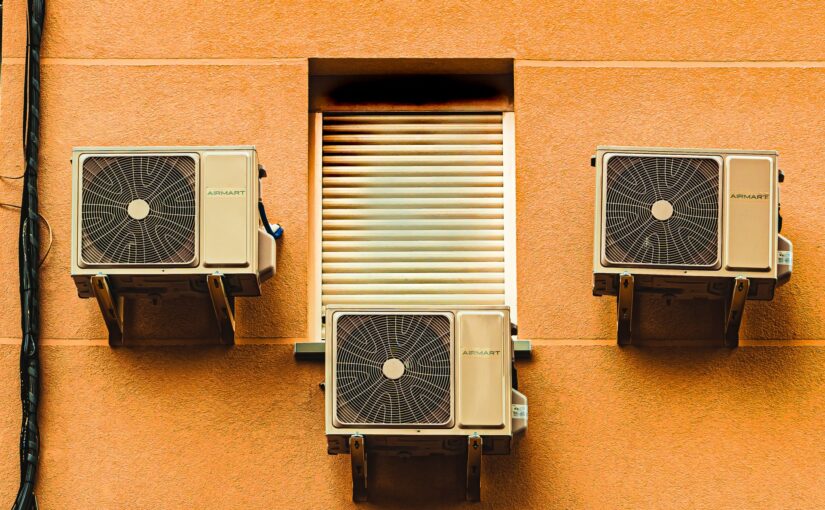Humidity is important to your hair, skin, and overall health. But did you know that your home needs it too? When humidity levels go too low, your house and furniture will get destroyed and specific germs will start thriving. You cannot afford to live without humidity. Also, you can’t live with an excess of it. You need to ensure that the humidity levels in your house are at the ideal levels.
According to experts, the ideal humidity level in your house should be 45 percent. This will ensure that you get moisture that’s not only comforting but also not cramping. Humidity levels that 30 percent are extremely dry. On the other hand, if it’s above 50 percent, it will be too damp.
Apart from your comforts, other complications will arise when the humid levels are either too high or low. This includes damaging your paint, growth of mold, and odor. Controlling humidity levels will reduce dust mites and the risk of pest infestations. To maintain 45 percent, you need to use different strategies based on your humidity levels.
Reducing indoor humidity
If your home has high humidity levels, you’ve likely started feeling awful. Most homes have high humidity levels during summertime. When the humid levels are high, you’ll start feeling uncomfortable, sweaty, and miserable.
As we said earlier, high humidity levels lead to mold growth and damage your walls by creating condensation. Also, too much humidity will affect your respiratory system and disrupt your sleep patterns. The best way to know if your home has high humidity levels is by investing in a hygrometer. A hygrometer is a tool that’s used to measure the levels of moisture in the air. You can reduce humidity levels in your home by using the following strategies:
1. Invest in an air conditioner
Your air conditioner can help in reducing the levels of humidity in your house because it introduces cool air while consuming warm air. Control your humidity levels by turning up the air conditioner and changing the filter regularly. Anything that restricts the flow of air into your house is your enemy.
2. Use ventilation fans
When cooking using a hot stove or showering, you need to use your ventilation fans. If you usually turn them off after completing your activities, you should consider keeping them on for a longer period. This is an effective way to reduce humidity in your house.
3. Take cold showers
Hot showers increase the humidity levels in your house. Most people love hot showers. However, if your house has high humid levels, you need to switch to ice-cold showers. Lowering the temperature levels in your house will lead to less steam in the air. And this will help in adjusting your humidity levels.
4. Fix leaking pipes
As you try to reduce humidity levels in your house, the last thing you want to do is add moisture. Leaking pipes always add moisture. You need to fix leaking pipes and insulate them to prevent the formation of condensation. Some common signs of leaking pipes include wet spots, stained walls, and high water bills.
5. Clean your gutters
Gutters usually lead to water leaks indoors. And this is terrible for you and your home. You need to keep your gutters clean while ensuring that the downspout is extended six feet away from your house.
6. Dry your clothes outside
We all have clothes that can’t be put in a dryer. During the winter season, most people use indoor drying racks extensively. However, in the summer, damp clothes will increase humidity levels in your house. You must hang your clothes outside on a clothesline or drying rack. Before you do, you need to check the laws of your neighborhood since there might be some restrictions in place. If you want to hang damp clothes indoors, consider investing in a dehumidifier.
7. Relocate your house plants
Indoor plants are lively and beautiful. However, they usually release high levels of moisture. If you have lots of plants in your house, you should consider relocating them.
8. Open your windows
Sometimes, opening a window can help in reducing humidity levels. However, you should avoid doing this when your air conditioner is running because you’ll end up spending lots of money on cooling air that’s getting released outside.
Increasing humidity levels in your home
Low humidity levels can lead to a wide range of issues throat and eye irritation and flaky skin. As you’ve seen, high humidity isn’t good either. If your house has low humidity levels, there are several effective ways that you can use to increase them. As you are going to see, increasing the humidity levels in your house is easy.
1. Invest in a humidifier
One of the best ways to increase humidity levels in your house is by investing in a humidifier. Humidifiers are simple devices that are made up of a tank. All you have to do is fill it up with water. This will create a cool or warm mist depending on the model you invest in. The smaller your space, the smaller the humidifier you’ll need and vice versa.
2. Hang your clothes inside
If the humidity levels in your house are low, all you need to do is hang your newly washed clothes. Hanging your laundry will add moisture to your house. Another advantage of using this method is you’ll save a lot of money. Drying racks are quite expensive.
3. Add houseplants
Houseplants are among the most effective ways to increase humidity levels in your house while purifying your air. Plants are natural humidifiers because they help in absorbing moisture through the stems, leaves, and roots. You need to choose the plants that you’ll invest in carefully.
4. Don’t place lids
Cooking is one of the best sources of moisture. As you cook, you need to avoid covering your pots to allow the steam to enter into the air.
Conclusion
You have to ensure that the humidity levels in your house are within the ideal range to avoid destroying your house and harming yourself. With these tips, it will be easy for you to achieve your desired goal depending on the environmental conditions.
Author Bio:

Leon Collier is a blogger and academic writer from the UK who has vast experience working with best essay writing service UK and essay writers. He loves to take on every challenge thrown at him and has the ability to deliver outstanding work regularly. When he’s not busy writing, he loves reading books and playing tabletop games with his friends. Follow him on Twitter @LeonCollier12. Photo by Jose Antonio Gallego Vázquez on Unsplash






